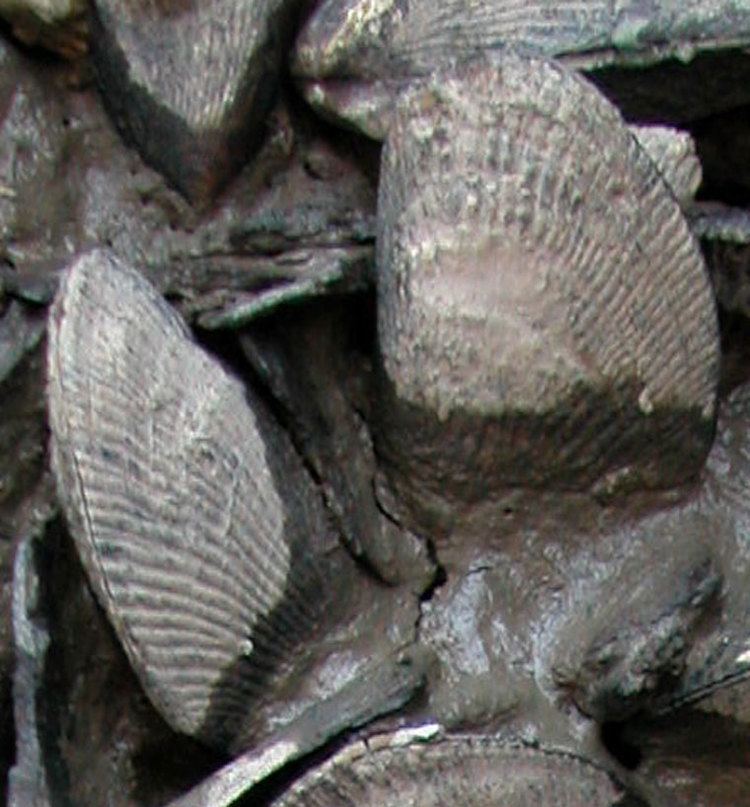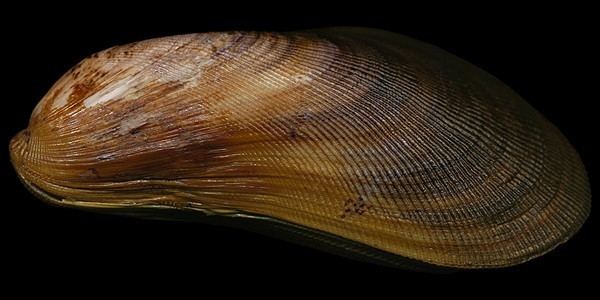Order Mytiloida | Subclass Heterodonta Rank Species | |
 | ||
Similar Ribbed mussel, Brachidontes, Modiolus, Eastern oyster, Spartina alterniflora | ||
Geukensia demissa is a species of mussel, a marine bivalve mollusk in the family Mytilidae, the true mussels. This species is native to the Atlantic coast of North America. The common names for this species include ribbed mussel, Atlantic ribbed marsh mussel and ribbed horsemussel. However, the common name ribbed mussel is also used for the Southern Hemisphere mussel Aulacomya atra. The appearance of the shell is grooved and oval in shape. The interior of this mussel is tinted purple
Contents

The ribbed shells of this species usually attain a length of 10 cm length, and can be as large as 13 cm. Age can be determined by counting dark growth rings on the shell and mussels typically live 10 – 15 years, but more advanced ages are not uncommon.
Distribution

The ribbed mussel occurs in the coastal waters of salt marsh habitats from the southern Gulf of St. Lawrence in eastern Canada south along the western Atlantic coast to Florida. In the Gulf of Mexico this species is replaced by the southern ribbed mussel, Geukensia granosissima. Geukensia granosissima and Geukensia demissa hybridize in southern Florida.
The ribbed mussel has been introduced to Texas, Mexico, California, and Venezuela.
Habitat
Ribbed mussels live in the intertidal zone, attached to hard surfaces or embedded in sediment with the help of their byssal threads. They are typically found in salt marshes.
Reproduction
Ribbed mussels are dioecious and sexes can only be determined histologically.

They reproduce once per year in Connecticut and South Carolina, however in an introduced population in Venezuela two spawning peaks have been observed.

Mussels >20 mm are typically reproductive, however it is not uncommon for mussels up to 35 mm to have no signs of gametogenesis.
